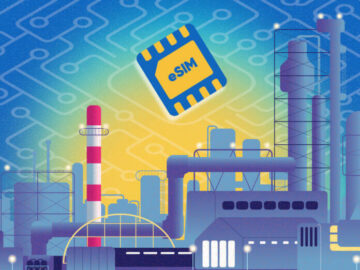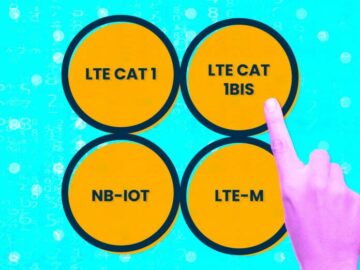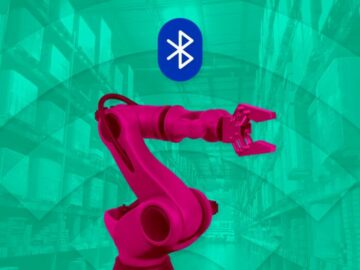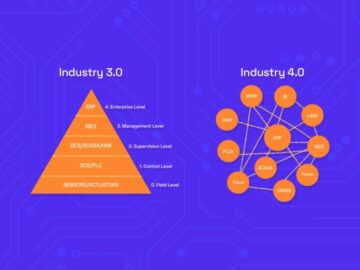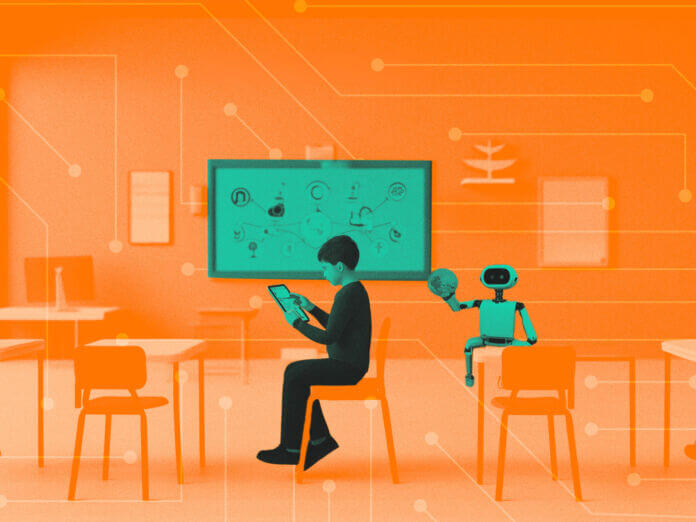
Integrating technology in education has been revolutionary, with the IoT as a driving force. Through IoT, educators can now use smart devices and interconnected systems to personalize their teaching. These advancements improve learning outcomes by empowering students with special needs to overcome barriers, engage in the lesson, and achieve greater independence.
Collaborative Learning Opportunities
IoT improves collaborative learning and creates a space that embraces students with learning disabilities. This approach is key in the rise of e-learning, which has expanded by 900% since 2000. Using IoT with online tools allows students to share insights, regardless of their abilities.
This shift ensures all students can contribute to group assignments to enrich their learning. It also opens up avenues for remote participation.
Even if students can’t physically attend classes due to health or accessibility reasons, they can still be part of the learning community. Through IoT, education creates a classroom that celebrates diversity.
Customizable Learning Environments
IoT devices transform education spaces into adaptable learning environments catering to students’ needs. By employing smart technology — like adjustable lighting and temperature control systems — classrooms can suit the sensory sensitivities of each student. This approach enhances comfort and concentration.
This personalization is beneficial for students needing specific environmental conditions to thrive academically. The ability of IoT to adjust the learning atmosphere in real time ensures everyone can experience a comfortable setting. These spaces respect their unique needs and promote an effective learning environment.
IoT enhances communication between students with oral impairments and their educators. It bridges gaps that traditional methods cannot. Integrating speech-to-text software, real-time subtitles, and customizable computer settings allows education to be accessible to more students.
This approach ensures educators hear and understand students. It also improves learners’ ability to participate in classroom activities and engage with their peers. The adaptability of these technologies supports many communication needs so students with speech challenges can experience a fairer learning environment.
Interactive Learning Materials
This technology makes educational materials more interactive, engaging students who find traditional teaching methods less effective. For example, smartboards and IoT-connected tablets allow educators to offer tactile feedback.
Additionally, these devices are invaluable for students with visual impairments. This interaction allows them to “feel” the information through vibrations or other physical cues. It makes abstract concepts more understandable.
Further, these technologies can adapt to various learning styles and needs, allowing educators to present information visually, auditorily, and kinesthetically. As a result, IoT makes education accessible to students with specific challenges. Doing so enhances engagement in all activities, and makes learning more inclusive, dynamic, and effective.
Real-Time Progress Monitoring
Observing students’ progress through IoT technologies offers significant benefits for personalized education. Using multitask learning algorithms allows educators to assess student performance across various parameters. Meanwhile, it can also identify strengths and areas for improvement simultaneously.
Moreover, wearable devices can track engagement and comprehension metrics. This information can provide feedback on the effectiveness of teaching strategies. Teachers can then adapt lesson plans and educational methods to meet students’ individual needs. This level of personalization guarantees every student receives the support they need.
Safety and Security Enhancements
IoT enhances the safety of special needs students within and beyond classroom environments. If educators or caregivers use technologies like GPS trackers in wearable devices, they can check on students prone to getting lost.
These solutions offer peace of mind and enable real-time tracking that can prevent potential incidents. Further, these devices’ features mean you can customize them to each student’s requirements. This ensures a safety strategy that respects their independence and safeguards their well-being.
Help with Daily Tasks
IoT devices support students with daily tasks and foster their self-reliance in education and everyday life. Through smart devices, students can keep track of their schedules. Reminders ensure they attend classes on time and manage their assignments.
Moreover, IoT technology can help learners navigate the school. It can offer real-time directions and updates to help students move around the campus. This feature benefits those who find new or complex environments overwhelming.
Also, teachers can integrate these navigational aids into wearables or smartphones. These empower students to focus more on their academic and personal growth.
Creating a Future Together for Inclusive Education
Educators and technology developers must collaborate to create inclusive and secure IoT solutions. This effort addresses the needs of all students, especially those with learning disabilities or special requirements. By pooling their expertise, they can unlock opportunities for enhanced education through technology.
This collaboration develops spaces where students can thrive with IoT. With a shared commitment to innovation and inclusivity, the future looks bright. It promises a world where all students can reach their fullest potential.
- SEO Powered Content & PR Distribution. Get Amplified Today.
- PlatoData.Network Vertical Generative Ai. Empower Yourself. Access Here.
- PlatoAiStream. Web3 Intelligence. Knowledge Amplified. Access Here.
- PlatoESG. Carbon, CleanTech, Energy, Environment, Solar, Waste Management. Access Here.
- PlatoHealth. Biotech and Clinical Trials Intelligence. Access Here.
- Source: https://www.iotforall.com/how-iot-is-shaping-special-education
- :has
- :is
- :where
- $UP
- 1
- 2000
- a
- abilities
- ability
- ABSTRACT
- academic
- accessibility
- accessible
- Achieve
- across
- activities
- adapt
- adaptability
- addresses
- adjust
- adjustable
- advancements
- aids
- algorithms
- All
- allow
- Allowing
- allows
- also
- an
- and
- approach
- ARE
- areas
- around
- AS
- assess
- assignments
- Atmosphere
- attend
- avenues
- barriers
- BE
- been
- beneficial
- benefits
- between
- Beyond
- bridges
- Bright
- by
- Campus
- CAN
- cannot
- catering
- celebrates
- challenges
- check
- classes
- classroom
- collaborate
- collaboration
- collaborative
- COM
- comfort
- comfortable
- commitment
- Communication
- community
- complex
- computer
- concentration
- concepts
- conditions
- contribute
- control
- create
- creates
- customizable
- customize
- daily
- developers
- develops
- Devices
- directions
- disabilities
- Diversity
- doing
- driving
- due
- dynamic
- E-Learning
- each
- Education
- educational
- educators
- Effective
- effectiveness
- effort
- Embraces
- employing
- empower
- empowering
- enable
- engage
- engagement
- engaging
- enhanced
- Enhances
- enrich
- ensures
- Environment
- environmental
- environments
- especially
- Every
- everyday
- everyone
- example
- expanded
- experience
- expertise
- fairer
- Feature
- Features
- feedback
- Find
- Focus
- For
- Force
- Foster
- further
- future
- gaps
- getting
- gps
- greater
- Group
- Growth
- guarantees
- Health
- hear
- help
- How
- HTTPS
- identify
- if
- improve
- improvement
- improves
- in
- incidents
- Inclusive
- Inclusivity
- independence
- individual
- information
- Innovation
- insights
- integrate
- Integrating
- interaction
- interactive
- interconnected
- into
- invaluable
- iot
- IT
- jpg
- Keep
- Key
- learners
- learning
- less
- lesson
- Level
- Life
- Lighting
- like
- LOOKS
- lost
- MAKES
- manage
- many
- materials
- max-width
- mean
- Meanwhile
- Meet
- methods
- Metrics
- mind
- more
- move
- must
- Navigate
- Need
- needing
- needs
- New
- now
- of
- offer
- Offers
- on
- online
- opens
- opportunities
- or
- oral
- Other
- outcomes
- Overcome
- overwhelming
- parameters
- part
- participate
- participation
- peace
- peers
- personal
- personalization
- personalize
- physical
- Physically
- plans
- plato
- Plato Data Intelligence
- PlatoData
- pooling
- potential
- present
- prevent
- Progress
- promises
- promote
- provide
- reach
- real
- real-time
- reasons
- receives
- Regardless
- remote
- Requirements
- respect
- respects
- result
- revolutionary
- Rise
- safeguards
- Safety
- School
- secure
- security
- setting
- settings
- shaping
- Share
- shared
- shift
- significant
- simultaneously
- since
- smart
- smartphones
- So
- Software
- Solutions
- Space
- spaces
- special
- special needs
- specific
- speech
- speech-to-text
- Still
- strategies
- Strategy
- strengths
- Student
- Students
- styles
- subtitles
- Suit
- support
- Supports
- Systems
- tablets
- tasks
- teachers
- Teaching
- Technologies
- Technology
- that
- The
- The Future
- the information
- their
- Them
- then
- These
- they
- this
- those
- Thrive
- Through
- time
- to
- together
- tools
- track
- Trackers
- Tracking
- traditional
- Transform
- understand
- understandable
- unique
- unlock
- Updates
- use
- using
- various
- visual
- visually
- wearable
- wearable devices
- wearables
- WHO
- with
- within
- world
- you
- zephyrnet



